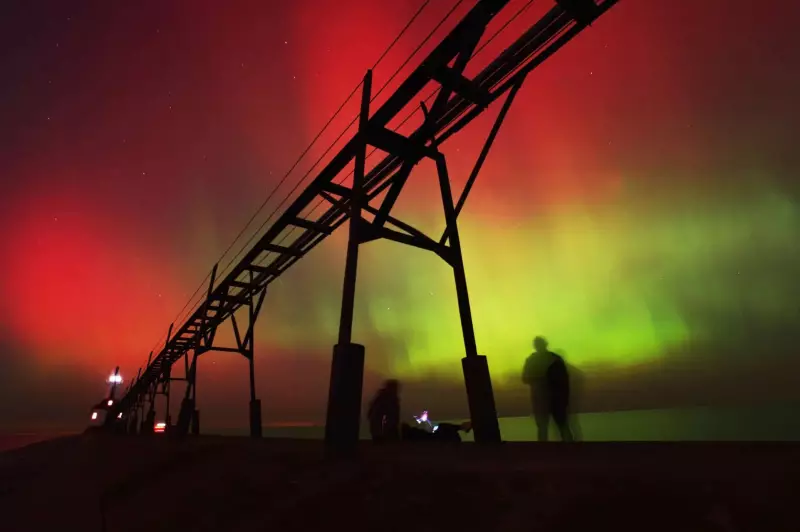
Cosmic Light Show Stuns America
On a November evening when most people were absorbed in their digital screens, the heavens decided to put on a spectacular show of their own. Vibrant curtains of pink and green light unfolded across the American sky, transforming ordinary landscapes into extraordinary vistas. From the plains to the mountains, from Tennessee's suburbs to New Mexico's highways, the northern lights made a rare appearance that made even Alabama resemble Iceland.
The Science Behind the Spectacle
Every aurora begins with solar violence - the sun ejecting charged particles in massive plasma outbursts called coronal mass ejections. When these particles encounter Earth's magnetic field, they create the beautiful light displays we know as auroras. This natural phenomenon represents the most poetic version of Newton's third law, where cosmic fury transforms into celestial dance.
This particular event stood out for its intensity. Shawn Dahl from NOAA classified it as a G4 geomagnetic storm, just one level below the strongest possible category. The National Weather Service documented the phenomenon from New York to Idaho, with pink halos surrounding farm silos, red veils shimmering behind church spires, and green flames illuminating the Rocky Mountains.
Fragile Beauty with Hidden Dangers
Beneath the stunning visual display lies a delicate balance. The same magnetic storms that create these beautiful light shows can disrupt satellite communications, distort GPS signals, and even cause power grid failures. Our technologically advanced civilization remains vulnerable to the very cosmic forces that create such beauty.
A Unifying Experience for Divided Times
For one remarkable night, the aurora created what might be called a democracy of wonder. Truck drivers in Kansas witnessed the same cosmic theater as hikers in Montana. Teenagers in Oklahoma abandoned their social media feeds to gaze at the horizon. Even those normally indifferent to astronomical events found themselves outdoors, sharing whispers of amazement.
In a nation often divided by politics and ideology, the aurora provided a rare bipartisan experience. The lights didn't care about voting preferences or political affiliations - they simply asked people to look upward. Alabama, typically known for its humidity rather than celestial halos, joined a continent-wide collective moment of awe.
The Emotional Impact Beyond Science
While scientists like meteorologist Marc Chenard could explain the phenomenon in terms of cloud cover, clear skies, and favorable conditions, and while chemistry tells us that oxygen creates green or red light while nitrogen produces violet and blue, no equation can capture the emotional response. There's no scientific formula for the wonder a child experiences seeing their first aurora, or the momentary return of belief in something greater than ourselves.
Every light in that November sky served as a reminder of both our cosmic smallness and our incredible luck. We orbit a star temperamental enough to create such spectacular displays, yet stable enough to sustain life. The same magnetic forces that protect us from solar radiation also allow us to witness the invisible dance between solar wind and Earth's magnetic field.
Lasting Memories After the Lights Fade
Somewhere in Santa Fe, someone captured a photograph from the roof of a performing arts center - red light glowing above the quiet city. They might not have known that those colors were born from oxygen atoms colliding 100 miles above, and they might not have cared. In that moment, they simply experienced what hope looks like when painted across the sky.
By Wednesday morning, the storm had moved on. The lights faded, photos continued to circulate on social media, and people returned to their daily routines of traffic, politics, and manufactured outrage. The geomagnetic storm became another entry in science archives, but the memory lingered like an afterimage - proof that for a few hours, the sky remembered how to be kind.
Auroras serve as cosmic postcards from chaos, demonstrating that disorder can produce beauty and violence can yield grace. They remind us that the same world capable of wildfires, wars, and digital despair can still, on an ordinary Tuesday night, transform the heavens into silk. Most comforting of all, they prove that the universe still holds surprises, even after we've named every star and commercialized every miracle. Perhaps auroras are not just lights in the sky, but gentle reminders that not all illumination comes from a screen.





